Abstract
The data from the first 3 years of the Samoan pilot filariasis control programme were reanalysed using incidence instead of prevalence statistics. With these statistics, failures of diethylcarbamazine treatment can be roughly divided into three groups: primary treatment failures, manifested by persistent microfilaraemia; secondary treatment failures, manifested by microfilaraemia recurring within the prepatent period after apparently successful treatment; and new infections. When cases of persistent and recurrent microfilaraemia are excluded by appropriate statistical manipulations, the incidence of new infections is seen to be many times higher in persons who originally showed microfilaraemia. This suggests that susceptibility or exposure, or both, are not homogeneously distributed in the population, and indicates that proposed mathematical models of filarial epidemiology must be further refined. It also indicates that filariasis control programmes should devote more attention to studies and control methods aimed at this high-risk subgroup of the population.
Full text
PDF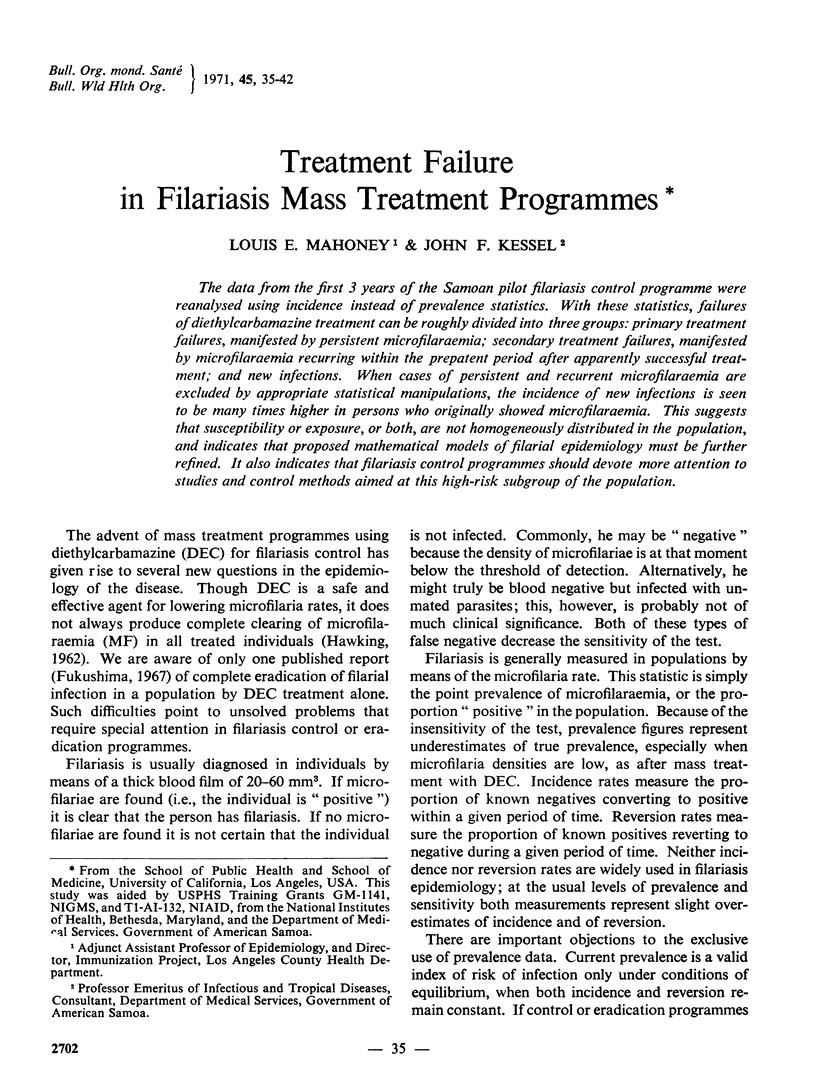
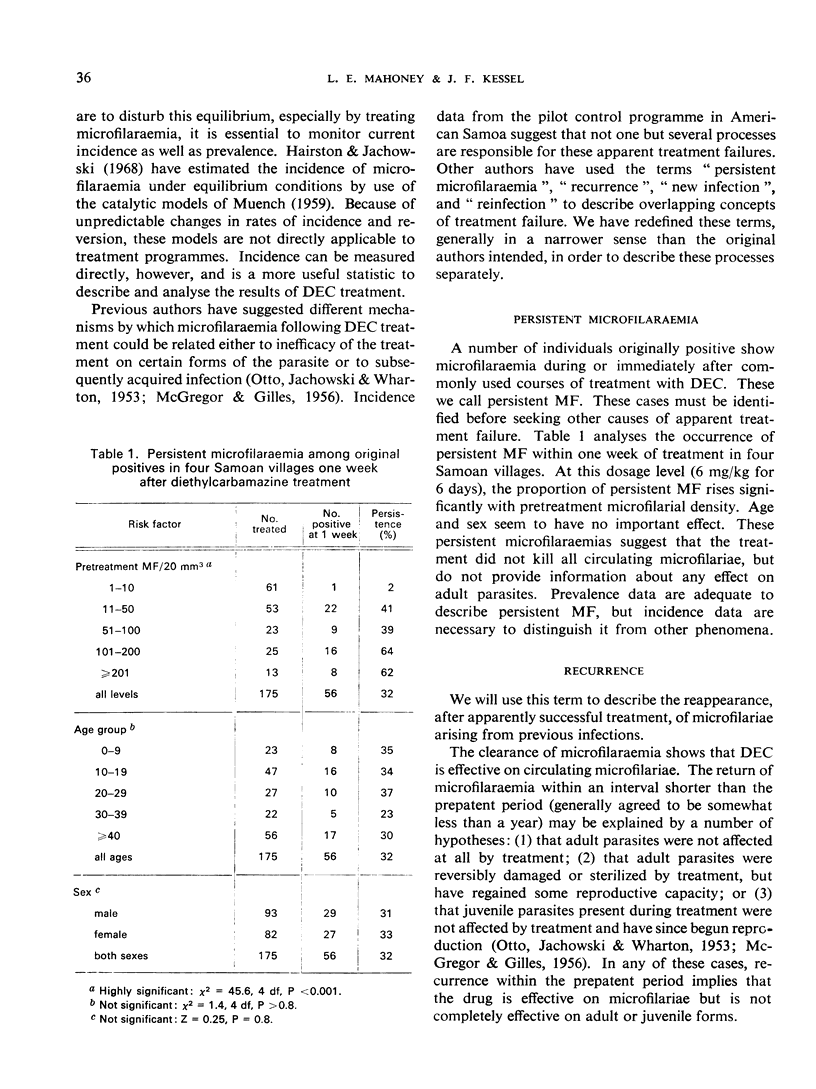
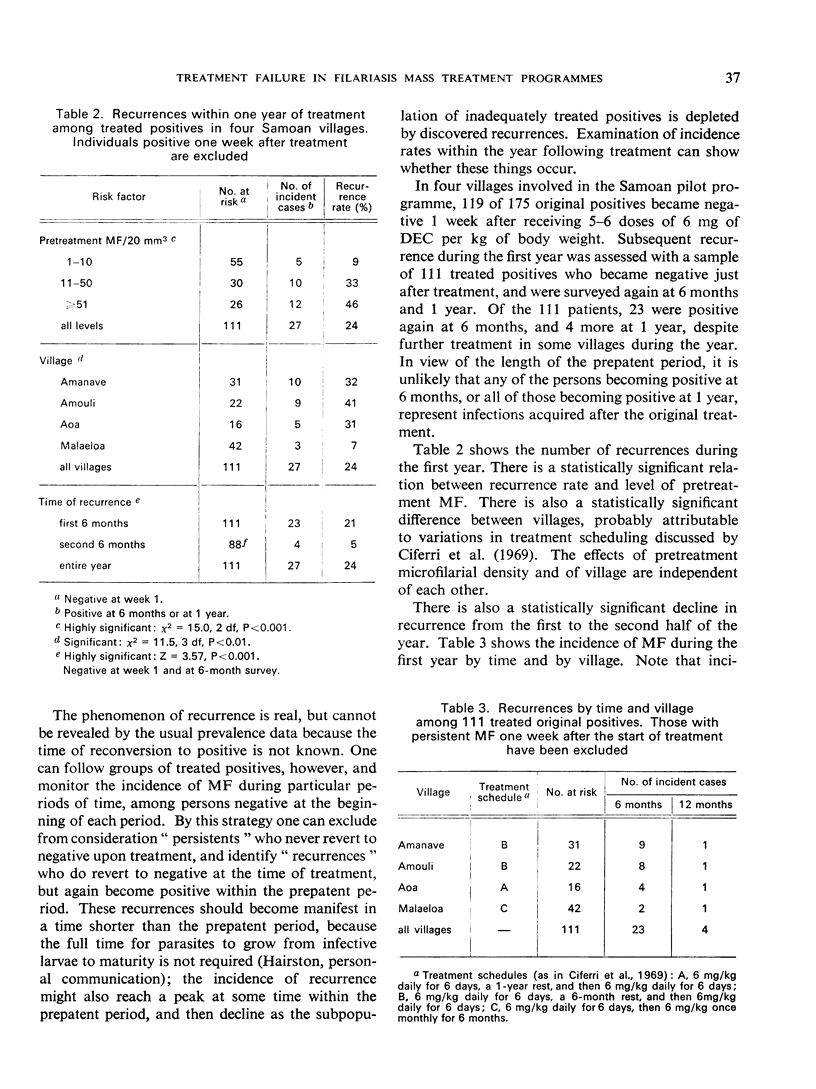
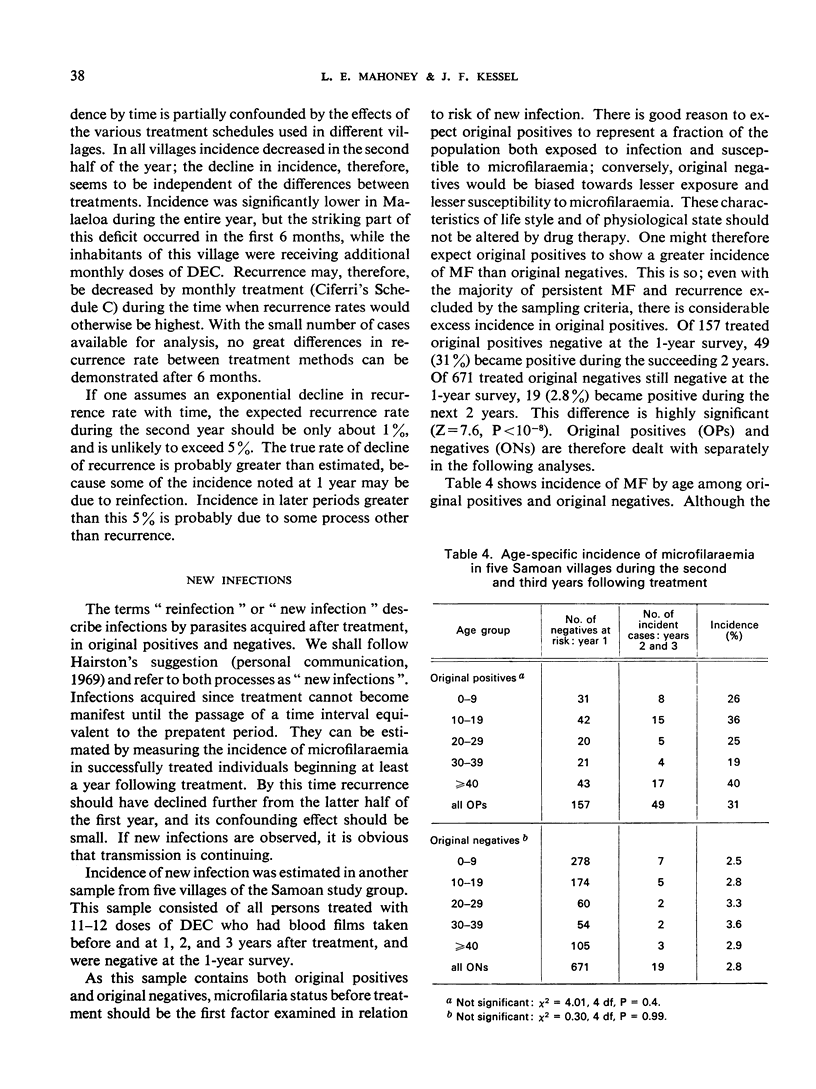

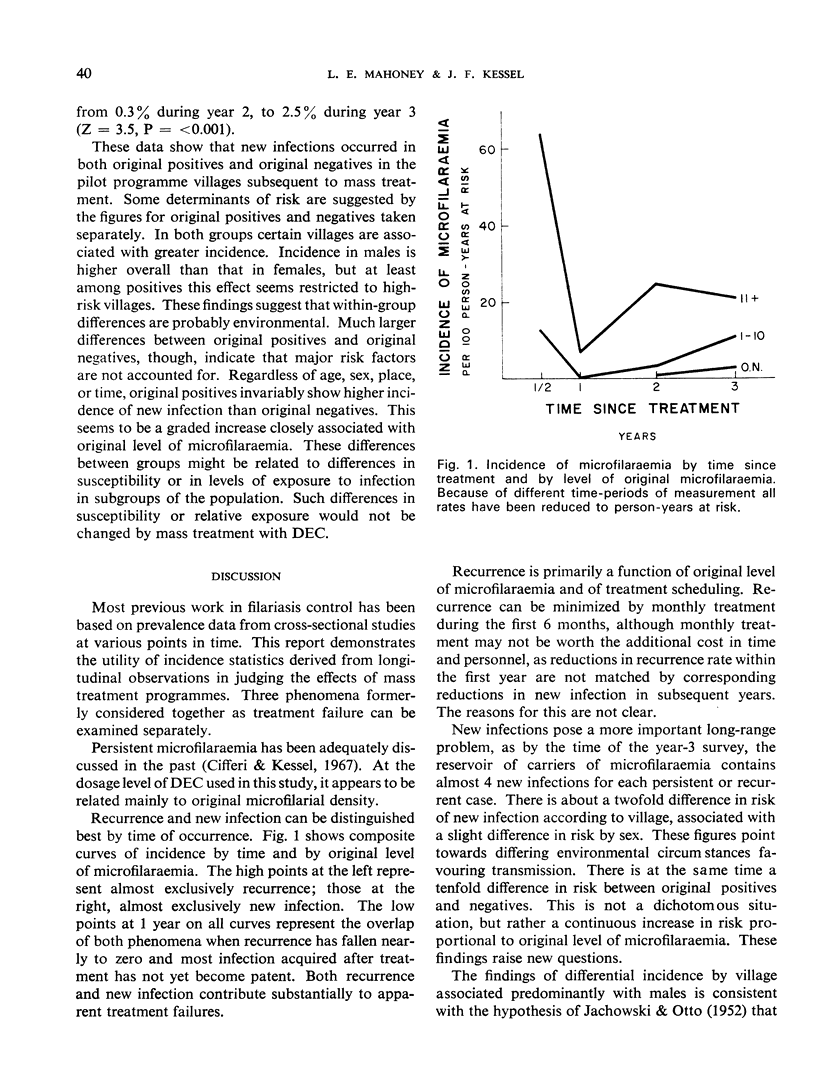
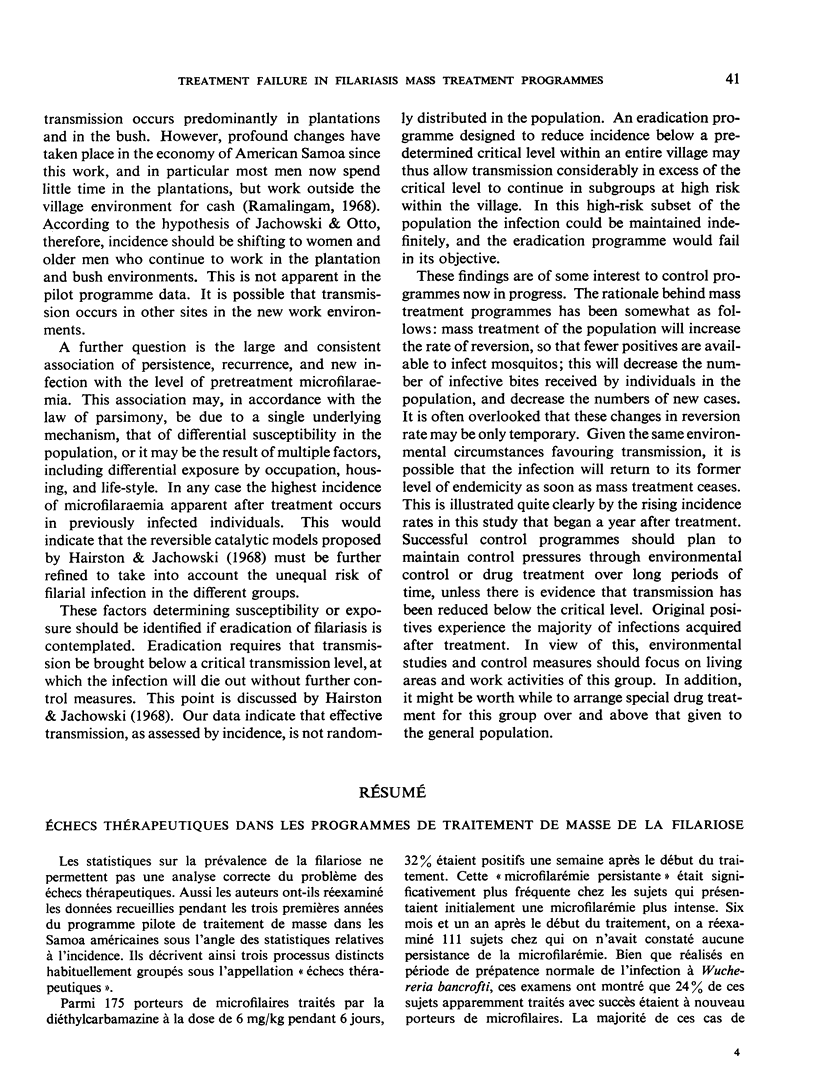
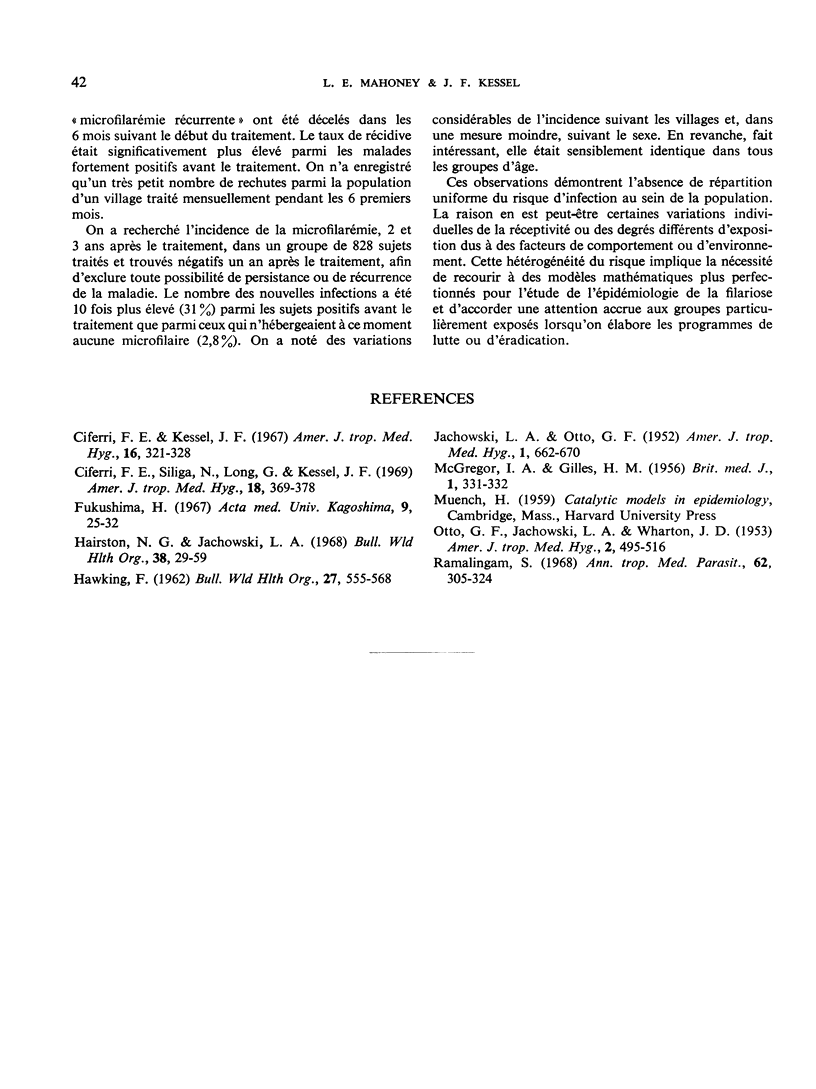
Selected References
These references are in PubMed. This may not be the complete list of references from this article.
- Ciferri F. E., Kessel J. F. Relation of age, sex, and microfilaria density to treatment of sub-periodic filariasis with diethylcarbamazine. Am J Trop Med Hyg. 1967 May;16(3):321–328. doi: 10.4269/ajtmh.1967.16.321. [DOI] [PubMed] [Google Scholar]
- Ciferri F., Siliga N., Long G., Kessel J. F. A filariasis-control program in American Samoa. Am J Trop Med Hyg. 1969 May;18(3):369–378. doi: 10.4269/ajtmh.1969.18.369. [DOI] [PubMed] [Google Scholar]
- HAWKING F. A review of progress in the chemotherapy and control of filariasis since 1955. Bull World Health Organ. 1962;27:555–568. [PMC free article] [PubMed] [Google Scholar]
- Hariston N. G., Jachowski L. A. Analysis of the Wuchereria bancrofti population in the people of American Samoa. Bull World Health Organ. 1968;38(1):29–59. [PMC free article] [PubMed] [Google Scholar]
- JACHOWSKI L. A., Jr, OTTO G. F. Filariasis in American Samoa. II. Evidence of transmission outside of villages. Am J Trop Med Hyg. 1952 Jul;1(4):662–670. doi: 10.4269/ajtmh.1952.1.662. [DOI] [PubMed] [Google Scholar]
- MCGREGOR I. A., GILLES H. M. Diethylcarbamazine control of bancroftian filariasis; follow-up of a field trial in West Africa. Br Med J. 1956 Feb 11;1(4962):331–332. doi: 10.1136/bmj.1.4962.331. [DOI] [PMC free article] [PubMed] [Google Scholar]
- OTTO G. F., JACHOWSKI L. A., WHARTON J. D. Filariasis in American Samoa. III. Studies on chemotherapy against the non-periodic form of Wuchereria bancrofti. Am J Trop Med Hyg. 1953 May;2(3):495–516. [PubMed] [Google Scholar]
- Ramalingam S. The epidemiology of filarial transmission in Samoa and Tonga. Ann Trop Med Parasitol. 1968 Sep;62(3):305–324. doi: 10.1080/00034983.1968.11686565. [DOI] [PubMed] [Google Scholar]


